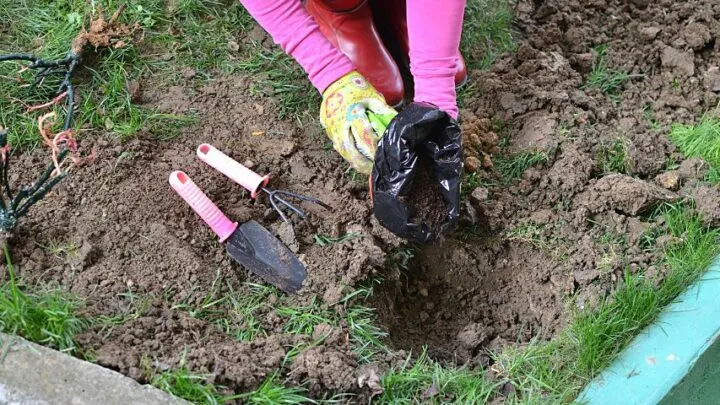Fertilizer provides plants with essential nutrients and helps to keep them healthy, but it’s possible to have too much of a good thing.
Too much fertilizer can actually be harmful to plants in many ways.
Overfertilization can weaken plants, making them more vulnerable to pest infestation or disease.
Thankfully, even if you give your plants too much fertilizer, it’s possible to reverse the process and nourish your plants back to health.
Table of Contents
How to Reverse Over Fertilization
If you’ve over-fertilized your plants, you’ll want to take steps to remove excess nutrients from the soil. Water and cover crops can both remove some nutrients from soil, which can help you bring your plants back to good health. If the problem’s serious, you can also relocate your plants.
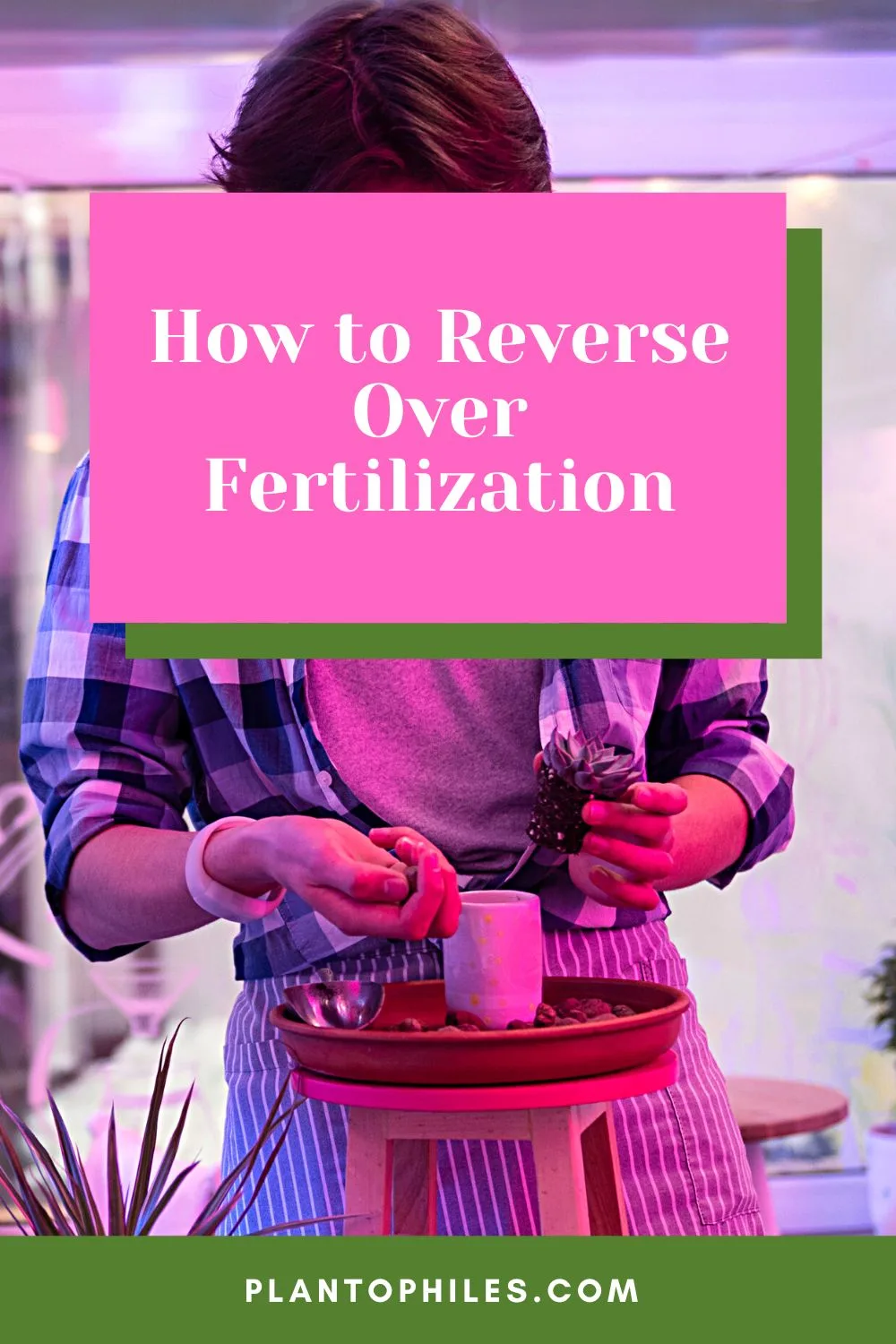
How to Reverse Over Fertilization
The sooner you take action, the more likely it is that your plants will make a full recovery.
These tips are some of the more effective ways to reverse over-fertilization and restore your soil.
1. Clear Away Fertilizer
Take the time to clear away any fertilizer that’s still visible. You can do this with a small shovel or a large spoon.
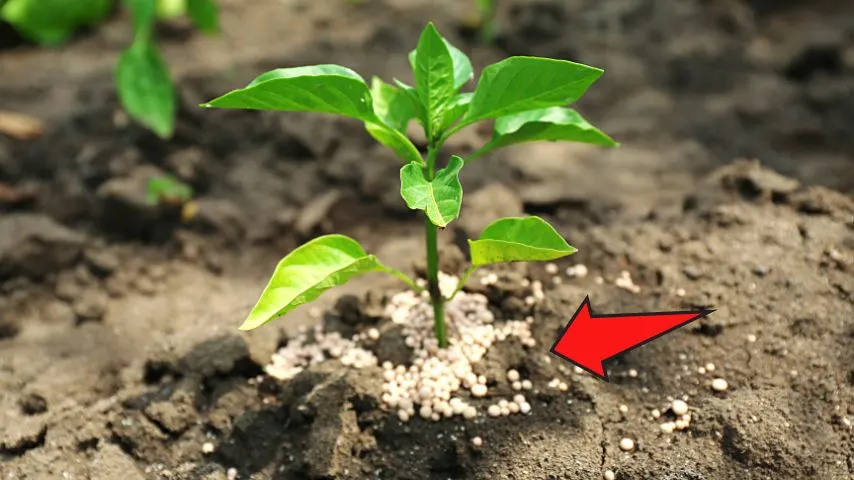
Clear visible fertilizer from the plant’s soil by scooping it up with a shovel or large spoon
Be cautious when you’re removing fertilizer so that you don’t do anything to damage your plants.
Make sure to be as thorough as you can to keep the problem from becoming any worse.
2. Remove Dead Leaves
While your plants can recover from the damage that over-fertilization has caused, there’s no way to restore leaves that are dead or dying.

Use your pruning shears to remove dead leaves from the plant after over fertilizing its soil
That’s why it’s best to remove those leaves so that your plant won’t waste any energy.
Get out your pruning shears and clear away any plant leaves that are yellow in color or brown. Once you clear away leaves that are visibly damaged, your plants will be able to grow new, healthy leaves.
3. Remove The Top Layer of Soil
Clear away your over-fertilized topsoil and replace it with a new layer of soil that hasn’t been fertilized.
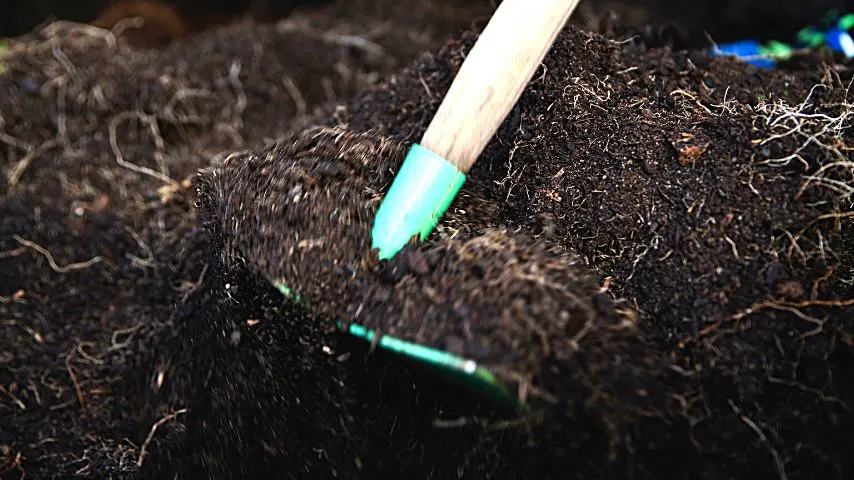
Remove the over fertilized top layer of soil before replacing it with a new layer
This will keep your plants from absorbing any more nutrients and will give them a healthy environment to recover in.
4. Use Cover Crops to Drain Excess Nutrients
Cover crops with deep roots, such as clover, crown vetch, and cereal rye, can reach the depths of the soil, capturing extra nutrients.
When you add cover crops, you’ll have more plants to absorb the nutrients in your soil.
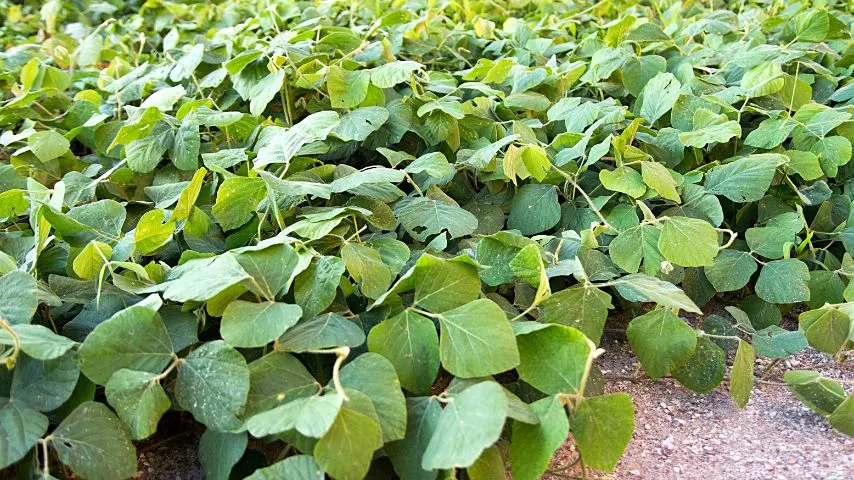
Planting cover crops with deep roots helps in absorbing the excess fertilizer from the over fertilized soil
In addition to removing excess nutrients, cover crops can reduce the nitrogen volatilization rate. By planting cover crops, you can quickly improve the condition of your soil.
5. Heavily Water Your Soil
Water is another way to drain excess nutrients out of your soil. That’s why you should water any areas that may have been over-fertilized, even if they appear to be healthy.
Over watering can also be damaging to plants, which is why you shouldn’t add more water than your plants can absorb.
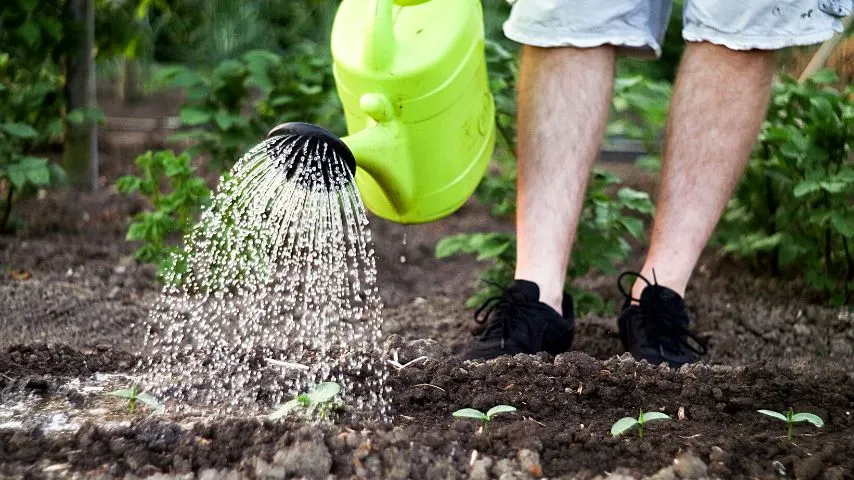
Though watering the soil heavily can damage the plants, it helps drain away the excess fertilizer from the over fertilized soil
Monitor your plants and water them regularly.
6. Avoid Fertilizer Until Your Plants Have Fully Recovered
Give your plants ample time to recover from over-fertilization.
Avoid using any type of fertilizer, even compost, until your plants are back to normal.
7. Transfer Your Plants
If the damage caused by over-fertilization is severe, your best course of action may be to move the plants to a brand-new location.

If over fertilizing your soil caused severe damage, it’s better to transfer your plant into a pot or another part of the garden
You can transfer plants to a pot or transplant them to another area of your garden.
Why Over Fertilization is Bad for Plants
Since fertilizer is filled with nutrients, it can be hard to understand why over-fertilization can be so damaging to plants.
Although the nutrients in the fertilizer are nourishing to plants, absorbing lots of fertilizer actually prevents plants from absorbing water.
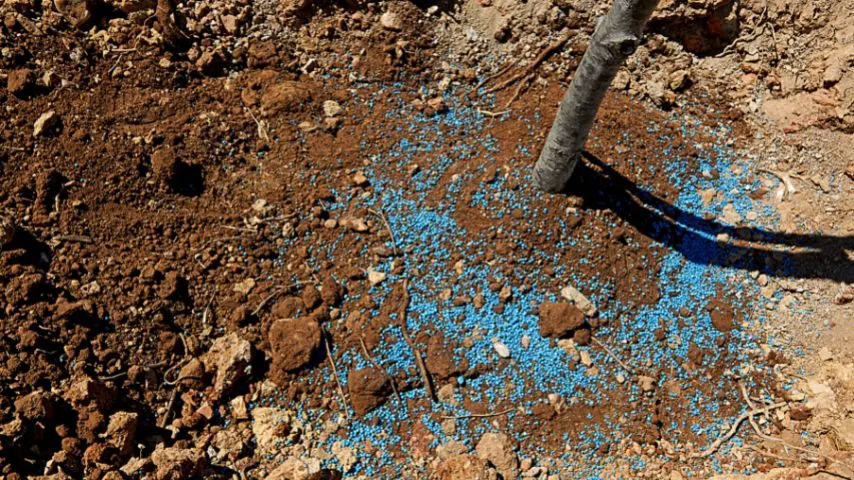
The excess fertilizer in the soil hinders the plants from absorbing water
Excessive levels of fertilizer put pressure on the roots of plants, causing water to flow in the opposite direction.
The results are similar to what would happen if you gave a human lots of food, but wouldn’t let them have anything to drink.
Over fertilization is harmful to plants and the environment, too.
Since your plants won’t be able to absorb all the nutrients you’re adding to the soil, those nutrients could contaminate the groundwater around you.
When it comes to fertilizer, moderation is key. If you consistently provide your plants with an appropriate amount of fertilizer, your plants will be able to get the nutrients and the water that they need.
How to Tell If Plants Are Over Fertilized
If you’ve given your plants too much fertilizer, you’ll see visible signs of damage.
While over-fertilization isn’t the only thing that can harm plants, these are a few of the warning signs you’ll want to watch out for.
1. Visible Fertilizer Crust
When you apply more fertilizer than your plants need, it may form a crust on the surface of the soil.
This crust is usually white, and may eventually turn into a powder.
2. Brown or Yellow Leaves
If excess nutrients are keeping your plants from getting the water that they need to survive, the leaves may start to brown or yellow.
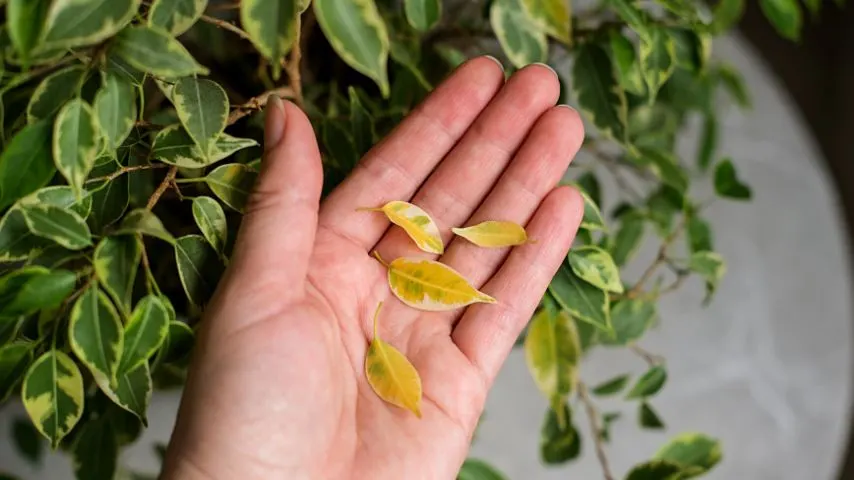
If the leaves on your plant starts browning or yellowing, especially at the plant’s base, it’s one sign of an over fertilized soil
Usually, the plant’s bottom leaves will show the first signs of damage.
3. Slow Growing or Dying Plants
If your plants seem very slow to grow, or if seedlings die shortly after they’re planted in your soil, there’s a good chance that over-fertilization is the culprit.
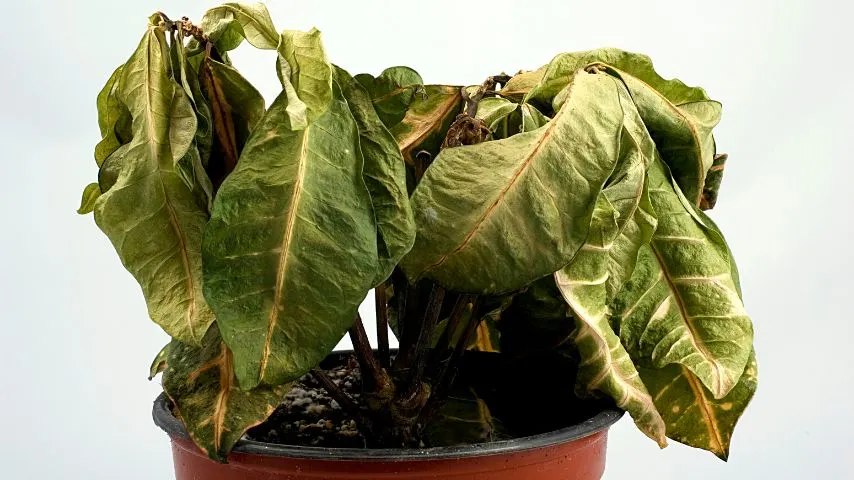
If your plant is growing slowly or is dying, there’s a good chance its soil is over fertilized
It’s a clear indicator that the plants aren’t in a healthy environment.
4. Damaged Roots
One way to check if your plants are over-fertilized is to take a look at the plant’s roots.
Over fertilization will cause the roots of plants to brown or even blacken.
How Much Fertilizer Plants Need
The amount of fertilizer that plants need can vary based on the type of soil the plants are growing in.
For example, plants growing in clay soil should be fertilized every four to six weeks, while plants in porous soil should be fertilized every three to four weeks.
As a rule of thumb, you should apply two pounds of fertilizer for every 100 square feet of garden space.
Since over-fertilization is a serious risk, it’s always best to use less fertilizer than you think you need
Frequently Asked Questions about How to Rever Over Fertilization
Can I Fertilize Plants After Transplanting?
If you have recently transferred over-fertilized plants, it’s best not to fertilize the soil right away. Even though you’ve moved the plants away from the over-fertilized soil, it’s likely that the plants have already absorbed excess nutrients.
Why Do Plants Need to Be Fertilized?
Without fertilizer, the nutrients in the soil will eventually be drained away. That’s why it’s best to fertilize your plants even though over-fertilization can be damaging.
Conclusion
There’s no need to panic if your plants are over-fertilized.
With the right methods, you can restore your soil and avoid over-fertilization in the future.

Daniel has been a plant enthusiast for over 20 years. He owns hundreds of houseplants and prepares for the chili growing seasons yearly with great anticipation. His favorite plants are plant species in the Araceae family, such as Monstera, Philodendron, and Anthurium. He also loves gardening and is growing hot peppers, tomatoes, and many more vegetables.

